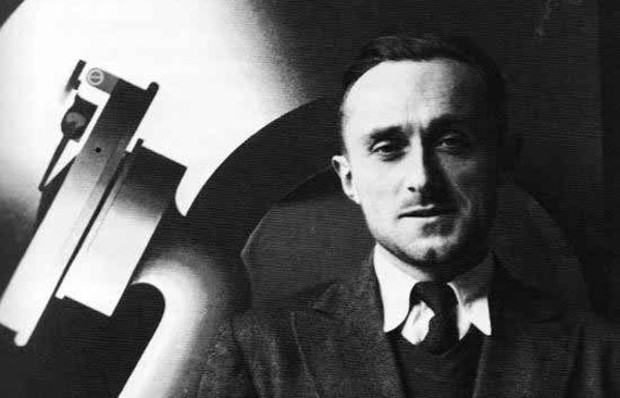
Widely recognized with his nom de plume Cassandre, Adolphe Jean-Marie Mouron was an eminent twentieth century Ukrainian-French graphic designer, painter, typeface designer and commercial poster artist. He was highly inspired by surrealist and cubist movements.
Adolphe Jean-Marie Mouron was born in a French household on January 24, 1901, in Kharkov, Ukraine. At the young age of 14, Cassandre relocated to Paris in 1915. There he received his formal art education from the independent studio of Lucien Simon and l’Académie Julian, École des Beaux-Arts. He had several occupations throughout his life in multiple disciplines. Upon completion of his studies, he founded his own studio in Paris in 1922. Henceforth, he used his pseudonym ‘Cassandre’ to sign his works. His meticulous poster designs earned him a job at a Parisian printing house.
In 1923, Cassandre designed his first poster that characterized his innovative and unique style, influenced by cubism and surrealism. The poster created especially for a cabinet maker came to known as Au Bûcheron, which depicts a woodcutter cutting down a tree with an axe. Printed on large-format, Au Bûcheron was displayed throughout Paris. Parisians were immediately impressed by Cassandre’s artistic skills which culminated in his increasing fame. In the following year, Au Bûcheron secured first place at Exposition Internationale des Arts Décoratifs. This recent development propelled his career to the height of success.
The success of his poster rendered Cassandre to set up his own advertising agency. In partnership with a colleague he founded Alliance Graphique in 1926. The agency served a variety of clients looking for assistance in advertisement of their enterprise. He is recognized for working with the Compagnie Internationale des Wagons-Lits for whom he designed a travel poster. His other highly successful posters include Étoile du Nord and Dubo Dubon Dubonnet. The latter is considered a distinctive poster for it was specifically designed to be seen from fast-moving vehicle. The original and inventive graphic solutions that Cassandre’s posters offered set them apart from others. His work also made frequent denotations to painters such as Max Ernst and Pablo Picasso.
Furthermore, Cassandre’s work bridged the gap between the two art forms; fine art and commercial art. He mastered the airbrushing techniques which facilitated him in creating seamless artworks that was not only received positively in Europe but United States as well. The sleek, architectonic styles of Art Deco are observed in his works. In fact, Cassandre’s work of art possesses traces of futurist inspiration with their energy and dynamism. Such innovative style and technique can be witnessed in his 1927 Nord Express poster. He also experimented with typography which resulted in him designing the noted advertising typeface Bifur. In 1935, he developed the sans-serif typeface Acier Noir. World’s Fair exhibited his creation, the first all-purpose typeface, Peignot, in 1937.
In early 1930s, Cassandre took up a painting project for a theater. During this period he also accepted a teaching position at the Ecole Nationale des Arts Décoratifs and subsequently at Rue Férou. The onset of World War II interrupted Cassandre’s career as he was drafted into French army and was demobilized upon France’s defeat. He returned to his business that was demolished in the aftermath of war, and in order to survive he offered his services to design stage sets and costumes for the theatre. He briefly returned to painting, producing the famous Yves Saint Laurent logo. In his final years, Cassandre suffered from bouts of depression and eventually ended up committing suicide in 1968.

